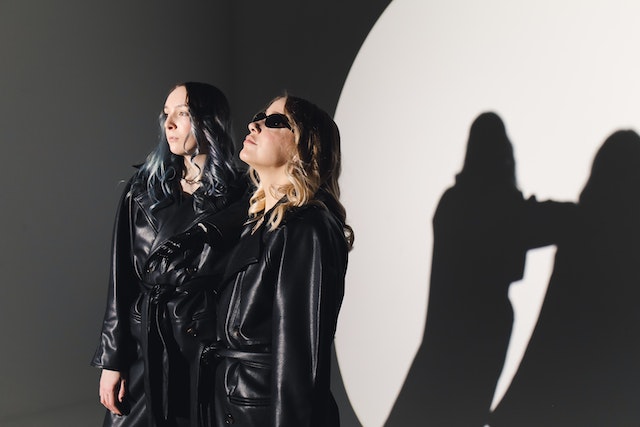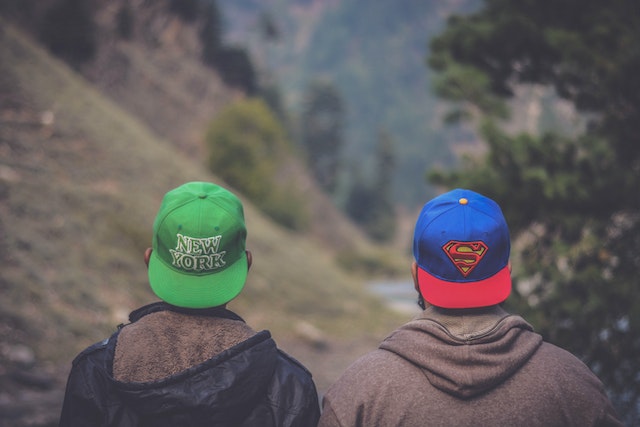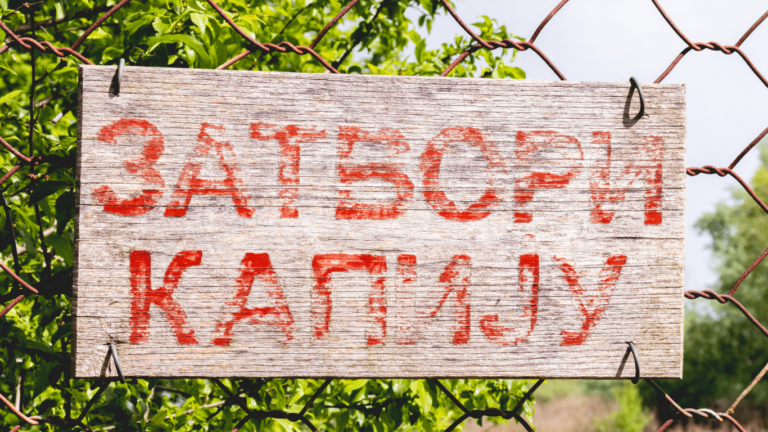Written by: Olivera Tolimir
An old Serbian proverb says, Odelo ne čini čoveka. It means: The suit doesn’t make a man. Simply put, we can’t determine a person’s worth by their clothes. It’s irrelevant how classy their attire is. What’s truly important is what kind of a person they are.
It’s a beautiful proverb. And a true one, for that matter. No one should judge anyone based on clothes, material status, and similar superficial things.
But is it true that we can’t learn anything about people based on their clothes? We’d say it depends. Although it can also be deceptive, sometimes clothes tell a lot about their owner’s music taste. If a person’s clothes are always neatly pressed, with matching colors and jewelry, it shows their attention to detail. Value-driven people who care about the environment will probably wear second-hand and sewn clothes. You won’t see them wearing fast fashion brands. And finally, specific pieces of clothing can reveal cultural background.
Wherever you stand on the clothes can tell us something about a person stance, clothes are undoubtedly a big part of our lives. Improper attire can result in being unable to enter places or a slightly better scenario, people judging.
So, to avoid uncomfortable style-related situations with Serbians, you’ll learn Serbian fashion vocabulary today!

#1 Learn Serbian-English Stylish Twins
Let’s start slowly: we’ll list crucial fashion-related words that sound very similar in Serbian and English. To be honest, Serbian borrowed most of these words from English, hence the similarity!
- stil – style:
- Sviđa mi se njen stil. (I like her style.)
- trend – trend; u trendu – trendy:
- Asimetrija je u trendu ovog leta. (Asymmetry is trendy this summer.)
- print – print:
- Ne podnosim tigrasti print. (I detest the tiger print.)
- šoping– shopping:
- Hoćeš li sa mnom u šoping? (Would you like to go shopping with me?)
- aksesoari – accessories
- Najviše volim satove i minđuše kao aksesoare. (I prefer watches and earrings as accessories.)
#2 Learn Serbian Words for Headwear
Now, you’ll learn Serbian ways to dress up from head to toe! Of course, we’ll start from the head.
In Serbia, you’ll mostly see people wearing caps and hats in summer and beanies in winter. So, let’s learn those three:
- kačket – cap
- šešir – hat
- kapa – beanie.
As you can see, you should be careful not to mix up a cap with the Serbian word kapa. Though sounding similar, the two words don’t represent the same thing.

#3 Learn Serbian Words for Tops
Next thing, tops! Depending on the season, people in Serbia wear crop tops, T-shirts, shirts, hoodies, sweaters, and jackets. So, all of them! Let’s learn Serbian words for tops together:
- top – usually a crop top or a sleeveless/spaghetti-strapped top
- majica – shirt
- We specify the type of shirt in Serbian by describing the kind of its sleeves. For example, majica dugih rukava is a long-sleeved shirt, and majica kratkih rukava is a T-shirt (a short-sleeved shirt). We can also describe a spaghetti-strapped shirt by saying majica na bretele. If a shirt has wider straps, we usually use the term majica bez rukava (direct translation: a sleeveless shirt).
- košulja – shirt (in this case, it’s a buttoned, more elegant version of a shirt)
- duks – hoodie
- džemper – sweater
- jakna – jacket
- kaput – coat.
#4 Learn Serbian Words for Bottoms
Now that you’ve chosen your favorite top, we should learn Serbian terminology for the bottom parts of clothes! Whether you opt for a comfortable trenerka or a stylish suknja, we’ve got you covered!
Check them out:
- trenerka – sweatpants
- farmerke / farmerice – jeans (this word is feminine and always the plural)
- pantalone – pants (again, feminine gender and always the plural)
- suknja – skirt
- šorts / šorc – shorts.
#5 Learn Serbian Words for Shoes
Of course, after you’re all dressed up, you can’t go barefoot! It’s time to learn Serbian words for all kinds of shoes:
- patike – sneakers
- cipele – elegant shoes
- If we’re talking about high heels, we can say cipele na štiklu or simply, štikle. If they’re flats, you can add the word flat and say, ravne cipele. If we’re talking about men’s shoes, they’re muške cipele.
- sandale – sandals
- papuče – slippers
- japanke – flip flops
- čizme – boots
- čarape – socks.

#6 Learn Serbian Words for Accessories
No outfit is complete without accessories! They’re the most creative and fun part of dressing up. Let’s learn:
- nakit – jewelry
- minđuše – earrings
- lančić – necklace
- prsten – ring
- narukvica – bracelet
- sat – watch
- marama – light scarf
- kravata – tie
- leptir mašna – bowtie
- šal – winter scarf
- rukavice – gloves
- kaiš – belt
- torba / tašna – bag/purse (torba and tašna are synonyms and are used for both bags and purses in Serbian)
- ranac / ruksak – backpack
- sunčane naočare – sunglasses.
#7 Learn Serbian Words for Style
If you’d like to describe your (or someone else’s) style in Serbian, remember these few adverbs:
- moderno – fashionably, trendy
- staromodno – old-fashioned
- sportski – sporty
- elegantno – elegant
- ležerno; kežual – casual
- otmeno – classy.
For example, you can say: Milan se oblači sportski, a Jelena moderno (Milan dresses sporty, and Jelena fashionably).

#8 Learn Serbian Fashion Phrases
Finally, you can’t learn Serbian fashion vocabulary by memorizing words only. You have to form natural sentences and phrases. So, here are some phrases Serbs usually use regarding fashion and clothes:
- (Ne) pratim modu. (I (don’t) follow fashion.)
- To je skroz u mom stilu. (That’s totally in my style.)
- Da li ćeš šiti ili kupiti haljinu? (Will you get your dress sewn or buy it?) Note: girls and women often discuss this before some formal event, such as a wedding.
- Volim da eksperimentišem s odećom. (I like to experiment with clothes.)
- Koji su ti omiljeni modni brendovi? (What are your favorite fashion brands?)
- Da li ti je važno da ti je odeća markirana? (Is it important for you to wear designer clothing?)
- Biram održive modne brendove. (I choose sustainable fashion brands.)
- Ne nosim krzno. (I don’t wear fur.)
And last but not least important sentence you’ll hear from women in Serbia regarding fashion:
- Uh, bole me noge! (Ugh, my feet hurt!)
Yes, we’re talking about high heels!
If you’re interested in learning more about style in Serbia, choose one of our great Serbian teachers and book your first private Serbian lesson! And to practice Serbian fashion vocabulary on your own, listen to Zdravko Colic’s 1994 song “Pusti, pusti modu” (“Let go of the Fashion”)!



